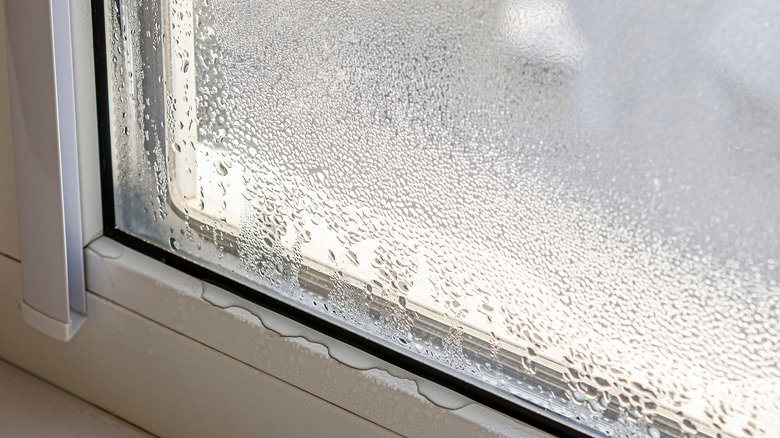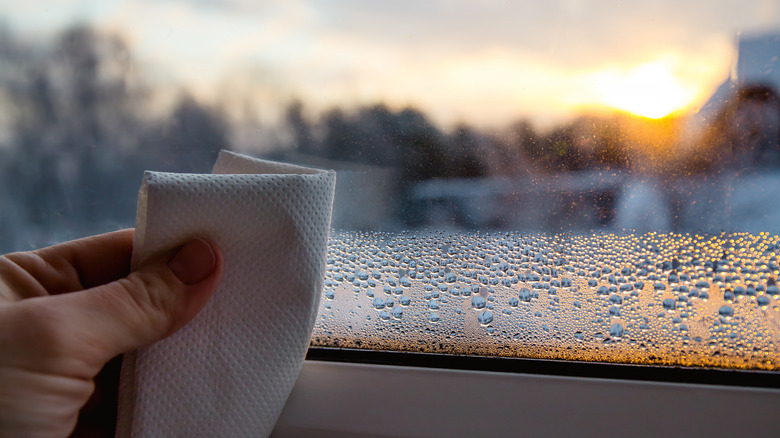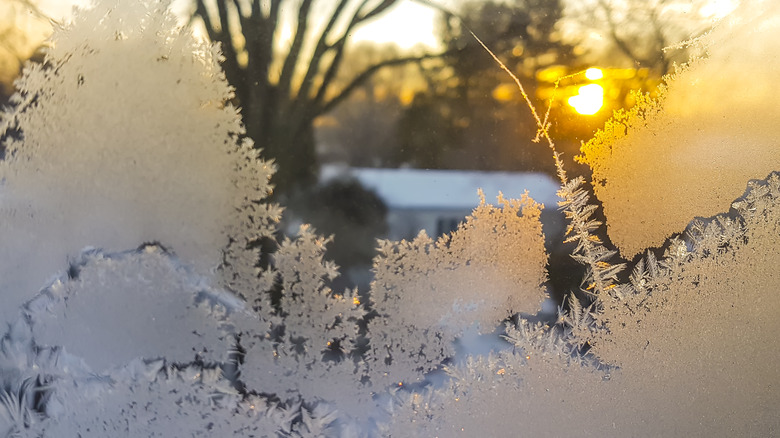How To Prevent Frost On The Inside Of Your Windows In Winter
Wintertime often comes with an inevitable drop in temperature, causing homeowners to adjust their behavior both inside and outside of the home. Blankets, sweaters, and hot drinks come into play while getting cozy becomes a nightly ritual. But, if you have frost building up on the inside of your windows, it can ruin the wintertime ambiance of a warm home. Moreover, if this problem remains untreated for long enough, warping of the wood around the window frame, paint discoloration, and mold growth can occur.
Condensation is normal, especially in homes with single-glazed windows, notes Homespire. But, in wintertime, the moisture that collects on the inside of a window can freeze rather than rest harmlessly on the panes. This collection of moisture can eventually lead to significant problems in the window's structure — if you're seeing this happen with increasing frequency, repairs or even a full window replacement might be in your future.
The cause of interior frost
National Geographic notes that condensation occurs when warm air — which holds water vapor — is cooled. When the warm air in your home comes into contact with your window pane, it condenses and turns into water droplets. However, when the temperature outside is at or below freezing, then those water droplets will freeze. Homespire explains that if you have frost on the interior of your windows, there are two primary culprits: Heightened levels of humidity and air leaks.
In the winter, we usually have our heating set to a high temperature, which means that the air inside our homes contains more humidity and moisture. This problem can be made worse if you do a lot of cooking or take long showers. In addition, those with older homes will often notice this issue to a greater degree, as the construction of the home, the level of insulation, and the quality of the windows all affect moisture levels and the amount of humidity within.
Fighting off frost and the effects of winter chill
Checking for air leaks is a good first step. Brothers Services recommends doing a thorough inspection to locate any gaps, cracks, or holes around the window and frame. If there are no obvious places where cold air is entering the home, then you can try using a candle or a thermal camera.
With a lit candle, slowly run your hand around the edges of the window and look for a flickering flame or changes in the smoke's behavior. Alternatively, a thermal camera is a highly technical solution that provides a visual of the window's seams with heat visualized in different colors. If you see a change in color, you know you've found your problem spot. Finding an air leak takes patience, but once you've discovered the source, fixing it is as simple as applying a new layer of caulk to seal the gaps.
To remove excess moisture, you can also install or increase your usage of exhaust fans and dehumidifiers. These are worthwhile in any circumstances, but particularly if you're seeing increased steam when cooking or showering. The EPA also suggests checking your home insulation to ensure that it is up to standard and that heat is properly distributed throughout your home. This will help tackle any discrepancies in humidity and temperature variance, which leads to condensation.


